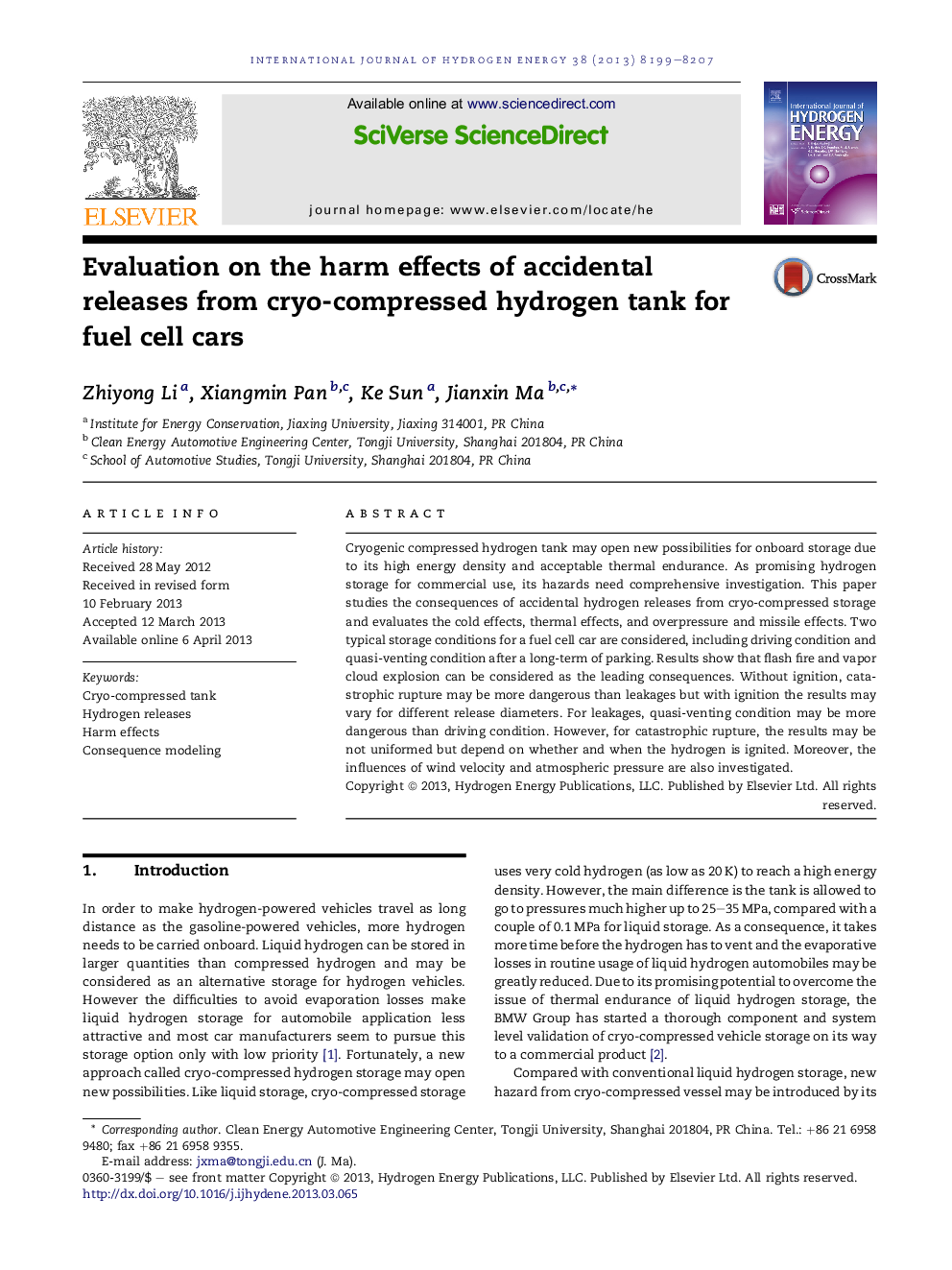| Article ID | Journal | Published Year | Pages | File Type |
|---|---|---|---|---|
| 1273678 | International Journal of Hydrogen Energy | 2013 | 9 Pages |
•Flash fire and vapor cloud explosion can be considered as the leading consequences.•Catastrophic rupture may not always severer than leakages.•For leakages, quasi-venting condition may be more dangerous than driving condition.•Wind velocity has reverse effect on rupture and leakages.•Lower atmospheric pressure may cause larger flammable cloud except for low pressure instantaneous release.
Cryogenic compressed hydrogen tank may open new possibilities for onboard storage due to its high energy density and acceptable thermal endurance. As promising hydrogen storage for commercial use, its hazards need comprehensive investigation. This paper studies the consequences of accidental hydrogen releases from cryo-compressed storage and evaluates the cold effects, thermal effects, and overpressure and missile effects. Two typical storage conditions for a fuel cell car are considered, including driving condition and quasi-venting condition after a long-term of parking. Results show that flash fire and vapor cloud explosion can be considered as the leading consequences. Without ignition, catastrophic rupture may be more dangerous than leakages but with ignition the results may vary for different release diameters. For leakages, quasi-venting condition may be more dangerous than driving condition. However, for catastrophic rupture, the results may be not uniformed but depend on whether and when the hydrogen is ignited. Moreover, the influences of wind velocity and atmospheric pressure are also investigated.
